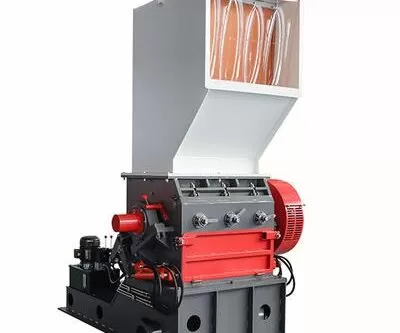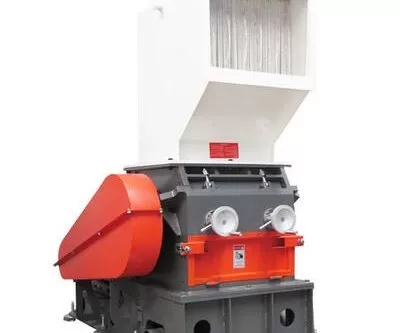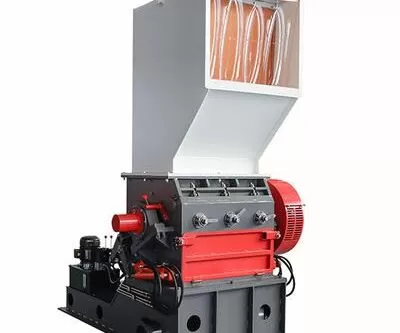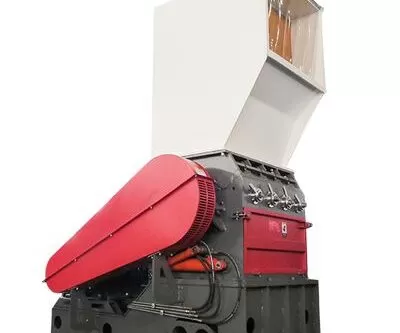Plastic waste is everywhere. Landfills are overflowing, oceans are choking, and brands are scrambling to clean up their act. People talk about sustainability, but when it comes to real solutions—most are still scratching their heads. That’s where we step in. At Amige, we’ve turned the art of plastic crushing and regeneration into a weapon for sustainable manufacturing.
We build a sustainable industrial chain by integrating resource regeneration with plastic crushing. This process transforms waste into high-quality raw material, reduces environmental damage, and closes the loop in plastic production.
Stick around—I’m breaking this down with wit, experience, and a sprinkle of hard-earned truth.

What is resource regeneration in the plastics industry?
Let’s not complicate things.
Resource regeneration is about taking discarded plastic and giving it a new life. It’s the ultimate comeback story. Instead of mining new petroleum or relying on virgin plastic, we recover, clean, crush, and remanufacture existing waste.
It’s not just green—it’s smart. In 2024, over 70 million tons of plastic waste was generated globally. Imagine tapping into that goldmine instead of letting it pollute the planet.
Plastic crushing is the first big step in this regeneration story.
Why does plastic crushing matter?
Crushing isn’t sexy—but it’s essential.
When plastic waste comes in, it’s bulky, irregular, and full of surprises. You can’t do anything meaningful with it in that state. Crushing transforms this chaos into uniform flakes or granules, ready for washing, melting, and pelletizing.
Our Amige crushers can handle everything from film to rigid drums—turning mess into opportunity. And let me tell you, nothing beats watching a tangled pile of plastic get smoothly crushed into a perfectly sized stream of recyclables.
How does this create a circular economy?
This is the fun part—closing the loop.
When you integrate plastic crushing into the broader recycling system, you’re no longer just dealing with waste. You’re creating value. Crushed plastic becomes feedstock. Feedstock becomes pellets. Pellets become new products. And those products? They eventually come back to us.
That’s what we call a circular economy—a regenerative system where nothing is wasted. According to one study, circular plastic supply chains could reduce plastic leakage into the environment by 80%.
At Amige, every crushed flake is a piece of that future.

What does a sustainable plastic processing line look like?
Glad you asked.
We design end-to-end systems that include:
- Collection and sorting
- Crushing
- Washing and drying
- Extrusion
- Pelletizing
- Packaging
The key is integration. Each step feeds the next. That’s how we reduce energy consumption, labor costs, and downtime. Our mid-capacity lines can reprocess 500kg/hour, requiring minimal manual intervention.
And yes—we’ve built lines that fit in a 50-square-meter space. Sustainability doesn’t need to be massive. Just smart.
How do we ensure the output is high quality?
You can crush all the plastic you want, but if your output’s junk, nobody’s buying.
We focus on consistency, cleanliness, and compatibility. That starts with crushing the right way—clean blades, calibrated screens, and no overheating. Then comes a deep washing cycle to remove glue, food waste, and labels.
From there, we test the melt flow index (MFI), density, and contamination levels. High-quality recycled pellets can replace up to 80% of virgin resin in manufacturing.
That’s the level we aim for—every. single. batch.

What are the environmental and economic benefits?
This is where my inner eco-nerd gets excited.
- We reduce landfill waste
- Slash the demand for virgin petroleum
- Lower carbon emissions
- And support green manufacturing jobs
On the money side? Companies that switch to recycled pellets save 30–50% in material costs. Governments love us. Brands love us. And most importantly, the planet gets a break.
I like to say—waste is just misplaced value. Our job is to put it back where it belongs.
What role do policies and tech innovations play?
Without policy, progress is slow. Luckily, the tide is turning.
More countries are introducing extended producer responsibility (EPR), mandating recycled content quotas, and banning single-use plastics. In China, the Plastic Pollution Control Action Plan aims for 30% recycled plastic content by 2025.
Tech is also moving fast. AI-powered sorting, real-time MFI sensors, and modular crusher designs are pushing boundaries. At Amige, we’re already testing smart crushers that adapt blade speed based on plastic type.
The future isn’t coming. It’s here. We just have to be ready for it.
Can SMEs join this sustainable chain?
Absolutely. Sustainability isn’t just for the big dogs.
We work with small manufacturers and recyclers across Asia and Latin America. With the right equipment and guidance, even a 100m² workshop can start a recycling operation.
The key is starting lean. Get a reliable crusher, a washer, and a small pelletizer. Use local waste streams. Sell to local factories. And grow from there.
Some of our clients started with one machine—and now run 5-line operations with international buyers. Start small. Think big. Stay green.

What challenges still exist?
Let’s be real. It’s not all smooth crushing.
- Contaminated input materials
- Volatile market prices
- Transportation logistics
- Technical skill gaps
But every challenge has a workaround. We’ve developed modular crushing systems that are easier to maintain. We provide remote training to bridge skill gaps. And our logistics network helps small recyclers get paid faster.
The goal? Empower the ecosystem. Because the more players in the chain, the stronger—and greener—it gets.
What’s next for plastic crushing and resource regeneration?
Bigger, smarter, and more connected.
We’re already looking at blockchain-based waste tracking, chemical recycling for complex polymers, and AI-driven predictive maintenance for crushing equipment.
But ultimately, the future lies in collaboration. We need governments, brands, recyclers, and consumers aligned. That’s how we turn today’s trash into tomorrow’s resource—again and again.
And if you’re in the game or thinking of joining? Call me. Let’s crush it—literally.
Conclusion
By combining resource regeneration with plastic crushing, we build not just a recycling system—but a sustainable, circular industrial chain. One that turns problems into profit and waste into worth.
